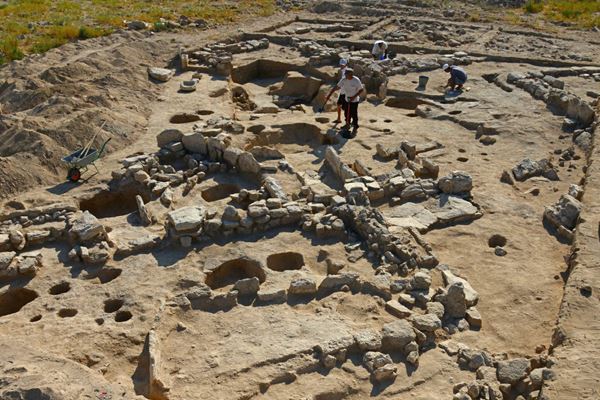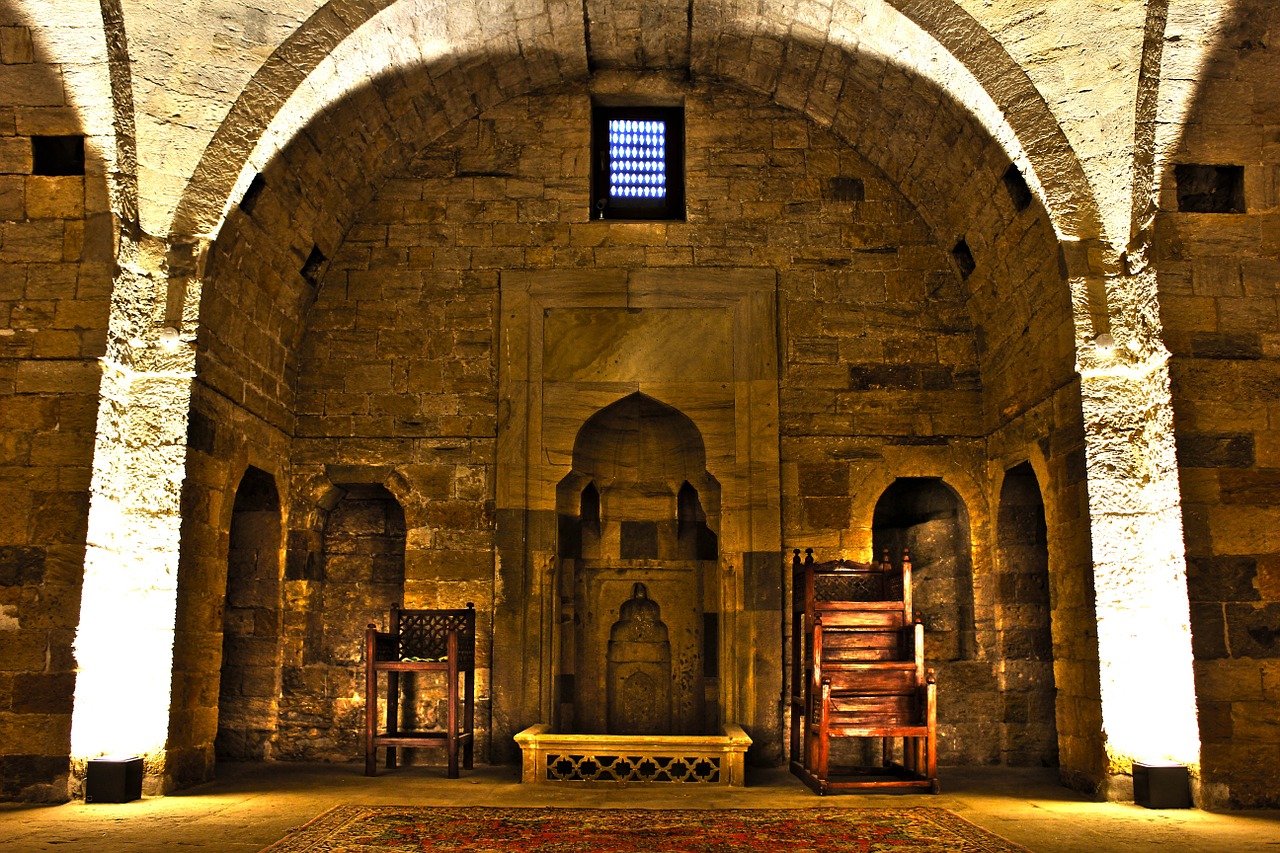According to archaeologists, it was a large settled settlement (which is unusual for the Mangyshlak Peninsula), people from almost all over the world lived here. In addition, the city was a prototype of the modern port of Aktau, as it had trade relations with almost all states of the time.
Experts believe that it was destroyed by an earthquake, as most of the material heritage that archaeologists face is buried under the rubble in its original form. Scientists also believe that the port city is a direct historical evidence of the existence of the northern branch of the Great Silk Road, which had a land-sea character and which is still debated by experts.
Time capsule
It all started with the ritual and funeral complex “Altyn Kazgan”, which was discovered in the region in 2010. The monument, as archaeologists later found out, belongs to the Hunnic period and to the time of the Great Migration. But, despite this, the complex has remained a mystery, and for scientists from around the world. The mystery of Mangistau “Stonehenge” was solved together with Novosibirsk archaeologists. After they published several articles about this monument in English, it attracted the interest of experts from Europe (France) and the United States. There was even a film about the ruler of the Huns – Attila, and 80 percent of the film was shot on Altyn Kazgane.
The city, which occupied at that time a large area of 6 hectares, had its own history of architectural traditions.
On 130 hectares there are pedestals, altars (they have no analogues in archeology or ancient history) and altars. The items found in the ritual and burial complex, or rather, the fact that they were not in a single copy, led researchers to believe that there must be a city nearby, where all this was made. And the city was found. And by accident.
– We were then working on the excavations of Kyzylkala – it was also a large settlement. And if so, then this is not a dead end, where all the goods went! We passed by the rock remains many times a day, but we did not even think that there, at a height of 100 meters, in the desert, where there is no water, people could live. And once I walked around it and saw the shards, apparently, was washed off the top, got up. That’s how the discovery was made, – says archaeologist Andriy Astafyev.
The discovery of the Karakabak settlement (it is still a conditional name – as it was called in ancient times, it is unknown) can turn the history of the Eurasian steppes upside down.
The trade and craft port is not mentioned in any written source. And it refers to the time, which is considered a white spot for researchers Mangyshlak – it’s late antiquity and the early Middle Ages.
– Never in modern history has it been said that there could be a route that went directly through the territory of Mangistau. Yes, merchants came to Kyzylkala, goods moved, but it was a medieval era. Now we are probably 2,000 years old. Earlier, historians have tried to express the version that in the I century BC. The northern branch of the Great Silk Road appeared in the 6th century BC, but these were only theories and some very vague mentions in ancient sources. Many historians “stretch” it through southern Kazakhstan and the northern Aral Sea region, others – through Khorezm and Ustyurt. And we now say that there was another branch, it was powerful and passed directly through Mangistau. It was a land-sea connection. By the way, there is no information at all that the North Caspian Sea was involved in the trade message. And here we have a whole city. This is the news that will be heard in scientific circles, this is the level of world discovery, – says Andriy Astafyev.
The city was destroyed by an earthquake, as most of the material heritage faced by archaeologists is buried under the rubble in its original form.
The city was destroyed in minutes
Earlier it was assumed that only nomadic tribes lived on the peninsula – harsh climatic conditions, lack of natural sources of drinking water allowed only to survive. But Karakabak completely refuted this claim. Archaeologists believe that the level of the Caspian Sea was much higher than before, so the Karakabaks could use groundwater.
– This settlement has natural fortifications – it is located on a high remains. We found 500 meters of stone wall 2 meters high with towers. Now these places are quite sluggish, and before the vegetation was rich, there were wild animals – we find the remains of what people consumed. And there lived a polyethnic population – there were people from all over the world: from the Caucasus, and from Iran, and from Khorezm, and from Byzantium. More than 1,000 people traded and lived here. At that time it was a very big city, – says Eugene BOHDANOV, a senior researcher at the Siberian Branch of the Institute of Archeology and Ethnography of the Russian Academy of Sciences.
According to scientists, people lived in Caracas before the earthquake, which occurred in the late V century AD. e. The city fell into disrepair, it was tried to rebuild, and then completely abandoned.
– There was a natural conservation of all material evidence. Part of the premises is just overflowing since then, we have a whole time capsule. If usually in the settlements we find just the remains of the foundations and the horizon of ordinary household waste, then there is something else. In addition to garbage, we see remnants of material culture. It was destroyed NOT by raids, but by an instantaneous earthquake, the object was preserved and has survived almost in the same form, – adds Andrey Astafyev.

Greeks and Persians in the Caspian Sea?
The city, which occupied a large area of 6 hectares at the time, had its own history of architectural traditions – there was a proper planning of streets, houses, the construction of which used raw bricks (this is not typical for the Mangyshlak Peninsula) – archaeologists suggested that such a method could come from Khorezm. The city existed for 3 centuries. So far, archaeologists have managed to excavate only one tenth of it during 2 full field seasons.
– The time is considered unclear, when all major centers were destroyed due to the war between Iran and Rome. Everything was destroyed, and, most likely, because of hostilities, people went here to the outskirts. This is how such a trade and craft settlement arose. Here ceramics were made, metal was smelted, Byzantine masters made jewelry, – says Eugene Bogdanov.
During the excavations, coins from China, Bukhara’s Sogdia, Khorezm, Iran, and Byzantium were found, ie the range of trade relations of the port city was quite wide.
Most researchers find copper coins, which, unlike gold and silver, were used for domestic trade. In addition, found several coins that are still unknown to numismatists. Archaeologists note – Karakabak was a focal point, and even draw a parallel with the current international trading port of Aktau. However, it is still not known for sure which ships were used in the Caspian Sea. Scientists suggest that the legislators in shipping could be Greeks or Persians.
– The history of Caspian shipping is almost zero. One thing we know for sure – there was a port city, there were goods that came here from the other side of the Caspian Sea, of course, by sea, no more! The Karakabakts themselves knew the sea well, because among their diet was sturgeon fish, carp, pike perch and, most interestingly, was a seal. That is, it can be caught only in the sea, so there must be some craft, – said the archaeologist.
If usually the settlements are just the remains of foundations and ordinary household waste, then in Karakabak archaeologists find the remains of material culture.
And only birds sing for free
Archaeologists are now awaiting funding for the project. It was last funded in 2019. But the funds that were allocated – and this is 20 million tenge, were a drop in the ocean.
– So far we do not have the financial or human capacity to work on both Karakabak and Altyn Kazgan at the same time. The amount of information only on Karakabak is enormous. Therefore, a memorandum was signed with the Novosibirsk Institute. Anthropologists, paleozoologists, paleobotanists, and geophysicists come here. We would like funding to come from different sources, as in other countries: from the state, local authorities and sponsors. Not yet. Initially, the project was funded by a German grant, but it ended, – sums up Andrei Astafyev.
It is still unknown who will pay for the work and how. How much money is needed, archaeologists can not say yet, because in order to just dig, you need one amount, and to thoroughly explore everything, there is not much money.

